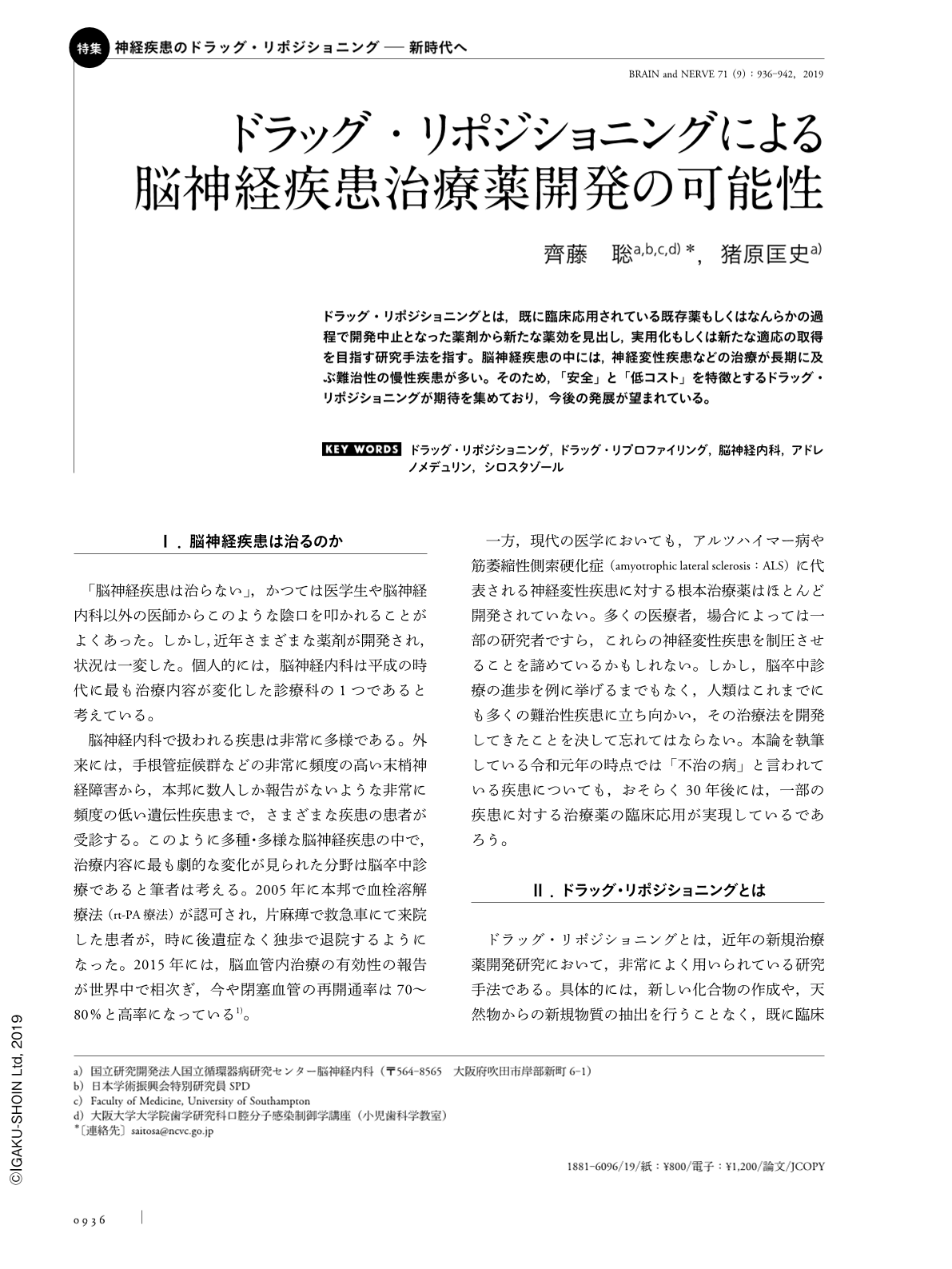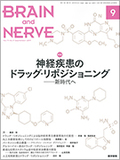Japanese
English
- 有料閲覧
- Abstract 文献概要
- 1ページ目 Look Inside
- 参考文献 Reference
ドラッグ・リポジショニングとは,既に臨床応用されている既存薬もしくはなんらかの過程で開発中止となった薬剤から新たな薬効を見出し,実用化もしくは新たな適応の取得を目指す研究手法を指す。脳神経疾患の中には,神経変性疾患などの治療が長期に及ぶ難治性の慢性疾患が多い。そのため,「安全」と「低コスト」を特徴とするドラッグ・リポジショニングが期待を集めており,今後の発展が望まれている。
Abstract
The aim of drug repositioning is to identify and develop new uses for existing drugs. Many drugs for neurological disorders have been established by drug repositioning. Conventional drug repositioning approaches are based on chance findings or close clinical observations. Nowadays, computational drug repositioning can complement these approaches. Drug repositioning has many advantages. For example, unexpected adverse events occur less frequently in clinical trials using repositioned drugs than in trials with new drugs because safety information for repositioned drugs has often already accumulated before the start of a clinical trial. Another advantage is that drug repositioning can shorten the time needed for drug development and thereby reduce costs related to drug innovation. If results of pharmacological and toxic tests are available, pre-clinical studies may also be omitted. Drug repositioning is especially promising in the development of treatments for neurodegenerative disorders because the development of new drugs for chronic disorders often takes more than 20 years and has a high financial burden. Strategic patenting is important to cooperate with pharmaceutical companies and to accomplish drug repositioning.

Copyright © 2019, Igaku-Shoin Ltd. All rights reserved.


